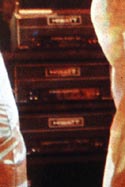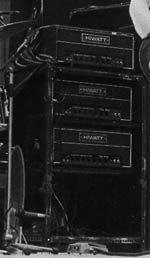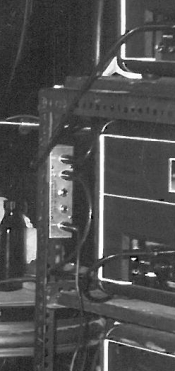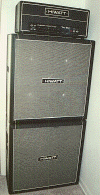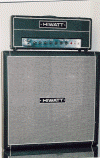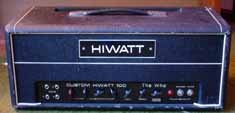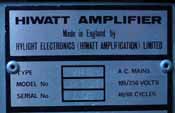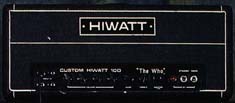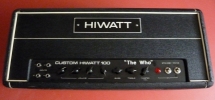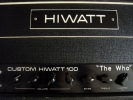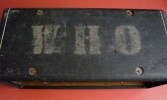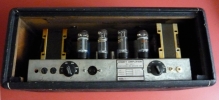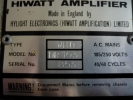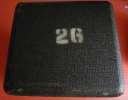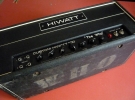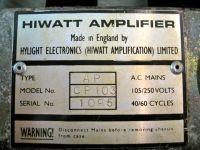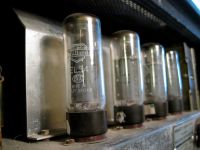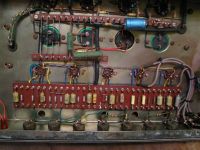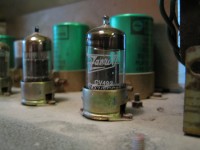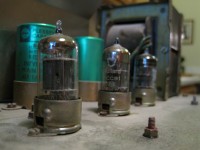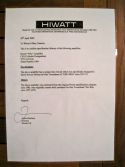Pete’s Gear: Hiwatt CP103 and DR103W
Pete Townshend’s use of Hiwatt amplifiers
Hiwatt amplifier details
The stage amplifier Pete Townshend used almost exclusively from 1969 to 1982. He began using the Hiwatts model after using modified Sound City L100 SC105 amplifiers with Hiwatt badges, which he used beginning late 1968. The first actual Hiwatt-labeled models featured the same circuit as the CP103 but did not feature the “The Who” branded control panel faceplate. The first CP103 models with “The Who” faceplates appeared in late 1969.
CP103 specifications
Pete had seven of these amps custom-built for him based on the Hiwatt DR103 design between 1969 and 19761973 — in at least three batches — by Dave Reeves of Hylight Electronics with the following factory modifications/differences from the DR103:
- Custom Hiwatt 100 “The Who” control panel.
- No middle or presence controls in the circuit.
- Four input channels, one volume control for each channel.
- Five preamp valves: four 12AX7/ECC83 and one 12AT7/ECC81
- Four EL34 power/output valves.
Misconceptions about the CP103
Here are a few misconceptions about Pete’s Hiwatt amps:
- Instrument inputs boosted by an additional 10db: This would only serve to distort the input and create additional hum.
- Instrument inputs linked together: The Sound City SC105 did not have linked inputs, and considering each of the inputs offers a unique “voicing,” it is unlikely they are linked.
- Middle and presence controls “removed” or “rendered inactive”: The CP103 (and SC105) were just a different tone circuit from the DR103 altogether.
- Output stage boosted to deliver 120 watts R.M.S.: The output transformer in the CP103 is identical to the 100-watt DR103.
- The CP103 had four preamp valves: It is based on the Sound City SC105, which had five, and the CP103 had five.
Full specification:
- Custom Hiwatt 100 “The Who” control panel.
- No middle or presence control.
- Five preamp valves:
ECC83 or 12AX7four 12AX7/ECC83 and one 12AT7/ECC81. - Four output valves: EL34.
- Partridge transformers.
- Four individual inputs (1 and 2
differentlyvoiced brighter than 3 and 4) with four independent volume controls. (Pete typically used input 1.) - Bass, treble and master volume controls.
- 100 watts R.M.S. into an 8 Ohm output impedance (though Pete has stated they are rated at 95 watts).
Controls
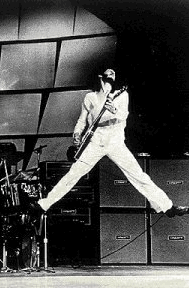
CP103 amp controls are, from left to right:
- Four inputs
- Four volume controls (one for each input; numbered one through four)
- Bass
- Treble
- Master volume
- Standby
- Mains.
The rear panel contains voltage and impedance selectors and two speaker output jacks. Hiwatt amps of this period, in general, featured Partridge transformers, point-to-point military spec wiring (courtesy of Harry Joyce), bell-like sound and “Spartan” reliability.
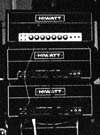
Click to view larger version. Two prototype-era CP103 amps (no “The Who” on control panel) with one Sound City L100 with Hiwatt badge (top), ca. 1969.
Pete plugged these amps into one or two Hiwatt SE4123 4×12 cabinets each (bottoms are occasionally dummy cabinets), loaded with four 50-watt Fane 12″ speakers, specially voiced for increased bass response, or, beginning in 1976, four 50-watt JBL K120 12″ speakers (for extra punch and a cleaner sound). (In 1982, Pete used MESA/Boogie 4×12 cabinets.)
Pete’s Setup
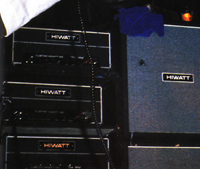
Click to view larger version. August 1972, two CP103 amps (top and bottom) and one leftover prototype-era CP103 amps (no “The Who” on control panel) in center.
In his standard setup, three amplifiers total are used onstage, two shelved in a custom rack unit (beginning 1972), with one on top of the rack unit. One amplifier is backup. The two amplifiers employed each drive one or both (when not dummies) of the top two SE1123 4×12s. In this setup, the guitar signal runs from the guitar, to the effect pedal sitting in front of the amplifiers (next to the drumkit), out to a junction box mounted to the side or back of the rack unit, which splits the signal out to the two active amplifiers. Usually, the top left input is used (#1) on both amplifiers.
For effects in his classic setup, through 1978, he used a Univox Super-Fuzz pedal; and from 1979–1985 an MXR Dyna Comp pedal. (For other modifications/variations to his rig during these periods, see the main equipment timeline.)
Setup signal path diagrams
Setup signal path (1968–1971)
Guitar > Univox Super Fuzz or Shaftesbury Duo Fuzz > Junction/splitter Box > Amps 1 & 2 Inputs (usually 1) > Cabinets
Setup signal path (1971–1974)
Guitar > Univox Super Fuzz > Junction/splitter Box > Amps 1 & 2 Inputs (usually 1) > Cabinets
Setup signal path (1975–1976) (presumed)
Guitar > Univox Super Fuzz > Junction/splitter Box > Gelf Preamp > Amps 1 & 2 Inputs (usually 1) > Cabinets > board > digital delay and phasing unit
Setup signal path (1977–1978) (presumed)
Guitar > Univox Super Fuzz > Junction/splitter Box > Electro-Harmonix Big Muff Pi > Amps 1 & 2 Inputs (1 or 3) > Cabinets
Setup signal path (1979–1981) (presumed)
Guitar > MXR Dyna-Comp > Junction/splitter Box > Amps 1 & 2 Inputs (usually 1) > Roland rackmount Dimension D SDD-320 Chorus > Cabinets
Setup signal path (1982/1985) (presumed)
Guitar > MXR Dyna-Comp > Junction/splitter Box > Amps 1 & 2 Inputs (usually 1) > Roland SDE-2000 DDL (controlled custom handmade footswitch, built by Ronnie Turpie) > Cabinets
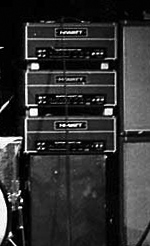
Three prototype (no “The Who” on control panel) CP103 amps, ca. summer 1969.
Typical settings
Pete’s typical amp settings during 1969–73:
For SG Specials:
- Vol. 1 (gain):
- 10
- Vols. 2–4:
- Off
- Bass:
- 0
- Treble:
- 9–10
- Master Vol.:
- 5–7
For Les Paul Deluxes:
- Vol. 1 (gain):
- 10
- Vols. 2–4:
- Off
- Bass:
- 5–6
- Treble:
- 9–10
- Master Vol.:
- 5–7
Overall signal (overdrive) is controlled by guitar volume.
1976 settings, as reported by Alan Smith:
“Pete’s amps are custom-made, with no mid-range controls. The treble is usually turned up considerably; the bass just a bit. The volume settings at the beginning of the show are 2/3rds up on the master control and full up on the channel module. By the end of the set, the amps are full on.”
Rack unit timeline
-
1968–1969:
Set up on flat-bottomed chair. -
1970–1971:
Set up on top of road case, separated by 2×2 blocks of wood. -
1972–1975:
Custom open rack unit, with one amp set atop unit. -
1976–1980:
Custom closed shelf unit. -
1981–1985:
Custom enclosed rack unit.
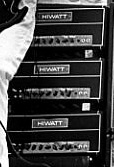
Three CP103 amps, ca. 1970.
He used the CP103 on stage from early 1970 through the end of the Who’s primary touring career in 1982.
DR103W

Click to view larger image. Ca. 1978, closeup of DR103W amplifier showing differing control panel from CP103, including Normal Vols. and Brilliant Vols. centered under each pair of volume controls.
Starting in 1973, Pete used amplifiers similar to the CP103 — the Hiwatt DR103W. These models featured a similar circuit and controls to the CP103, with no “The Who” faceplate. Controls are, from left to right: four inputs, four volume controls (two for “Normal Vols.,” two for “Brilliant Vols.” — a difference from the 1–4-numbered controls of the CP103), Bass, Treble, Master Volume, Standby, and Mains.
Signature CP103
In 2000, Hiwatt U.K. issued a signature Pete Townshend model to commemorate this amplifier, which Pete briefly used onstage for early 2006 shows.
Selected quotes from Pete Townshend
All quotes and references are copyright their original owners and are included for reference only.
From April 1980 issue of Sound International article, courtesy Joe G’s site.
… And then I met this guy who was making amplifiers at the time for a company called Sound City. This is much later, but all I know is once I found the Hiwatt amplifier I stuck with it. I tend to choose a guitar that fits the amp rather than the other way around.
- What Hiwatt set-up do you use?
PT: One amp and two 4 × 12 cabinets. I use a vertical stack but the bottom ones are dead, they’re dummies. I use the bottom ones to stand the top ones on. If they weren’t there I wouldn’t feel right. [ed note: This refers to Pete’s statement of using dummies for the bottom cabinets. It is likely that he is referring to a more recent practice (i.e., ca. 1980) to reduce stage volume. Photographs from 1980–81 corroborate miking of only the top cabinets; however, this is speculation only. Therefore, we have amended other such references to reflect only the 1980–81 era as Pete using dummy cabinets (other than early on — e.g., 1964 and 1965).]
- Are the Hiwatts stock?
PT: I’ve tried various speakers in the cabinets but I couldn’t tell you what’s in them now. I don’t know if they’re JBLs or Altecs or what. The ones I use are actually four-input amplifiers; each one with its own volume control and master volume at the end and they’ve only got treble and bass controls. They’re really basic valve amps.
- What settings do you use?
PT: I use the input full up to get the distortion and then turn the guitar down to control the amount of distortion from the guitar. And the master volume about half up. They’re only rated at 95 watts but they’re really good and reliable. I rarely get any trouble on stage.
Guitar, December 1973
I’ve got amps specially made for me by Hi-Watt. They don’t make it any more for the open market, but they do especially for me. They’re incredibly robust, very loud, distorted in the right way, and clean when I want them to be clean. I swap guitars around. I use Gretsches, Gibsons and sometimes Fenders, for their strength. I know people like Ronnie Wood had their guitars especially made for them, custom made. Never been moved that way myself. I can get away with anything because the amps are so good.
Guitar Player, October 1989
I never, ever used a stack with one amplifier until I got into Hiwatts, and I didn’t use Marshalls very long. In fact, I never used Marshall in the beginning at all. I used to use Fenders; I had a Fender Pro and a Fender Vibrasonic and a Fender Bassman top, and I used to drive Marshall 4×12’s with those amplifiers. I thought Marshalls were awful, and I’m afraid I still do, although that’s just a personal opinion. I don’t mean it’s bad stuff: I just mean I didn’t like the sound. And when I heard Hiwatt I was over the moon, because they sounded to me much more like a really good, top-line mid-’60s Fender amp. I still think it’s hard to beat Fender amps; they’re astonishing.
Despite the apparent randomness, Pete Townshend is actually quite selective and specific about his guitars. “In practical terms,” begins Pete, “I look for strength first, and a solid line from tailpiece to headstock — and that all components in that pathway be of high quality and super strength. I’m also very keen on clean, enhanced treble of the Gibson variety, but with no sustain. This more closely approximates the vibration cycle of the acoustic, and suits my rhythm style far better than charged-up, overwound pickups that whine on for hours. However, when I play solos, I like sustain, so a well-matched guitar and amplifier is the key, one in which the treble doesn’t change — up or down — when you change the level of the guitar into the amplifier. All that should change is the amount of sustain, in my opinion. I got a perfect combination for stage work with my Les Paul Deluxes or Schecter teles run into a master-volume Hiwatt.”
Where are they now?
The following shows the whereabouts of known units. If you have additional information, please contact Whotabs.
| Serial No. | Built | Whereabouts |
|---|---|---|
| NA | 1969? | Retained by Alan Rogan |
| 742 | 1970 | Unknown (retained by Alan Rogan?) |
| 852 | 1970 | Sold on auction at Christie’s of London, May 1995. On display at Hard Rock Museum, Orlando, Fla. |
| 853 | 1970 | Owned by Steve, USA |
| 892 | 1970 | Owned by Brad Rodgers, on display at Rock & Roll Museum, Cleveland, Ohio, 1998–2007. |
| 902 | 1970 | Owned by Tony Caprara |
| 1763 | 1971 | Pie Studios, Glen Cove, NY |
Hiwatt CP103 Gallery
Hiwatt CP103 amp
A late-1969-era CP103 (offset control panel text) with unknown serial number, retained by Alan Rogan. Courtesy Hiwatt Story (dcsbulldog.tripod.com).
Click images to view larger versions. Courtesy Alan Rogan and Brian Kehew and Hiwatt Story (dcsbulldog.tripod.com) .

Click image to view larger versions Courtesy Mark Huss’ Hiwatt Legacy: hiwatt.org
Hiwatt CP103 amp (serial no. 892) and Hiwatt SE4123 stack owned by Brad Rodgers
Hiwatt CP103 amp (serial no. 892) and Hiwatt SE4123 stack owned by Brad Rodgers, on display at Rock and Roll Museum, Cleveland, Ohio, 1998–2007. Courtesy whocollection.com. Many thanks to Brad Rodgers. For more, see whocollection.com.

Click image to view larger version. Hiwatt CP103 serial no. 892, courtesy Brad Rodgers, whocollection.com.
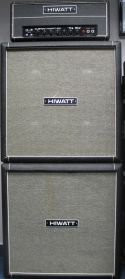
Click image to view larger version. (307kb) Hiwatt CP103 serial no. 892 and SE4123 stack, courtesy Brad Rodgers, whocollection.com.
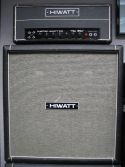
Click image to view larger versions. (1,432kb) Hiwatt CP103 serial no. 892 and SE4123 stack close-up, courtesy Brad Rodgers, whocollection.com.
Hiwatt CP103 amp (serial no. 902) owned by Tony Caprara
Hiwatt CP103 (serial no. 852)
From Colin Tebb:
Re: Hiwatt amp serial no. 852, I used to own it. I obtained it from a music shop in Chelmsford, Essex. I swapped it for a Peavey 20-watt practise amp! It had been in the shop a while and they could not sell it. It was the ’80s and big amps were not popular. They were unaware of what they had.
As a massive Who fan and visitor to the Who exhibition in London where I saw the real thing up close (I’d also helped with the audience overdubs for The Kids are Alright album at DeLane Lea Studios), I guessed it was probably genuine. In addition, a co-band member knew Pete Townshend and wrote to him with a photo. Pete stated he thought is was genuine and said it was probably “borrowed” as they had lost a lot of equipment in that period; however, he did not ask for it back!
I had it for over eight years and gigged with it often using a pair of Hiwatt ex-Moody Blues 4×12s, which I also put in the auction (they did not sell and I later sold them privately). When I bought the amp it had been covered in non-original vinyl covering. I used to work in Southend next to the old Dan Reeves location. A company called Acoustic Sound Services, which manufactured and maintained John Entwistle’s equipment. They re-covered and re-plated the amp for me using original rexine and nameplates by an ex-Hiwatt employee. When I picked the amp up it was sitting on John Entwistle’s bass stack, which was being prepared for a Who tour. The reason I sold it? Well, it was a brilliant amp very loud and quite trebly sounding with a sharp edge/presence and as a Who fan I did a lot of heart-searching before I put it into Christie’s, but it was time for a change of guitar setup and I could not afford to keep it given it was now a valuable item and gigging it was a concern.
Do I regret it? Probably, but it did get me a new guitar and complete amp/speaker setup!
This amp was sold on auction at Christie’s of London, May 1995, and is now display at the Hard Rock Museum in Orlando, Fla., USA.
Hiwatt CP103 (serial no. 853)
A 1970 Hiwatt CP103 amplifier, serial no. 853, owned by Steve, USA:
My good friend and band mate at the time forwarded me the listing for this amp. This was in 1998, before eBay, etc. He found it on a gear site and didn’t have the money for it. I contacted the owner, who told me that he bought it from Arnold & Morgan’s in Dallas, Texas. One of the employees there had been in a band called Kit & the Outlaws who had some local notoriety and opened up for the Who when they first played Dallas. He and Townshend became friends and traded the amp for a vintage guitar.
I decided from the pictures that I had to have a closer look, sent the money ($1,250) to an escrow service and he sent me the amp. It was clearly what he said it was, and sounded fabulous. I’ve had it ever since.
It’s funny, because I was just looking for a Hiwatt, because my former band had a couple of them and I loved them, and you could pick them up in the UK for about £200–300. They were just beginning to get trendy in the U.S., and were selling for about $500–600, so this was double the going rate, and a lot of money for me at the time. But I’ve never regretted it, if only for the look on people’s faces when I turn it on it’s back and show folks the “Who” stencil on the bottom. It really takes your breath away.
It’s missing the back panel, and in the last rehearsal space move I lost the old-style “kettle lead” for the mains power. I’ll probably put in a standard IEC socket so I can use a standard mains lead. I’ve got a nice SE4123 cab for it, serial number 6903. Last time I fired it up, it was still exactly what a Hiwatt should be — crushingly loud, uncolored amplification. Wow.
Many thanks to Steve.
Hiwatt CP103 (serial no. 1095)
A 1971 or 1972 Hiwatt CP103 amplifier, owned by Brad Gray. According to Brad:
Pete had returned the amp to the original Hiwatt company for service and never picked it up. The newer Hiwatt UK sold the head to another collector who had it for a few years. This collector used the new Hiwatt UK to sell it on consignment and I bought it earlier this year (2010).
This amp was used as the reference model for the Signature Series amps that Hiwatt UK has recently released.
The amp still has some Mullard valves in it. It sounds fantastic with a 1969 SG Special plugged in and the volume cranked. Definitely has that Live At Leeds tone.
Excerpt from Hiwatt UK letter regarding sn 1095:
This is to confirm specification /history of the following amplifier:
Hiwatt “Who” Amplifier
CP103 (Model Designation)
1971–2 (Circa)
Serial Number 1095Specification:
The above amplifier has a unique tone /circuit which was specifically designed by David Reeves /Hiwatt for Pete Townshend of “The Who” circa 1971–72.
History
The above amplifier was purchased from the original Hiwatt amplification company circa 1985, was originally custom built /produced for Pete Townshend /The Who circa 1971–1972.
Many thanks to Brad Gray.
Hiwatt CP103 (serial no. 742)
Whereabouts unknown. Likely retained by Alan Rogan.
Hiwatt CP103
Whereabouts unknown. Likely retained by Alan Rogan.
Hiwatt DR103W
Whereabouts unknown. Likely retained by Alan Rogan.
Hiwatt CP103 (no serial)
A Hiwatt CP103 amplifier, owned by Olle Lundin, author of “The Who In Sweden.”
Bought from Justin Harris at Music Ground shop in Denmark Street, London. It seems that the amp has been used with another (HM-hard rock) band, as it is tagged on one side?
We use it as we play it regulary, also in our collection is also an Marshall 8×12 promotional cab. I think they built 4 or 2 promotional cabs, when they did their “Townshend” signature series. These are real 8×12s, in one cab, not parted in two, as the ones that were sold.
John Entwistle’s 1971 Hiwatt CP103 amp (serial no. 1705)
Hiwatt DR103 modified to CP103 specification that originally belonged to John Entwistle. Sold for £2,900 (approx. U.S.$4,800) via auction by Cooper Owen on 25 September 2003. Courtesy Hiwatt Story (dcsbulldog.tripod.com).
Click images to view larger versions. Courtesy Cooper Owen and Hiwatt Story (dcsbulldog.tripod.com).
Four-channel Hiwatt DR103 – based on prototype CP103 customisation
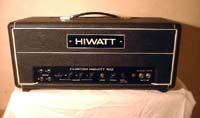
Click to view larger version. Hiwatt DR103 with CP103-style four-channel customisation Courtesy Alarm and Gene Loves Jezebel Guitarist James Stevenson.
Photos of a Hiwatt DR103 (type SAP, serial no. 715), likely from 1969, with the pre-CP103-style customisation, courtesy James Stevenson, guitarist of the Alarm and Gene Loves Jezebel.
This amplifier appears to be similar or identical to the “prototype” pre-CP103 four-channel customised Hiwatt DR103 amplifiers that Pete and John used from mid-1969 to early 1970. It has not been verified as an actual Who-related unit. This amp is owned by Alarm and Gene Loves Jezebel Guitarist James Stevenson.
This amp features:
- Four input/channels
- Four volume controls
- Extra pre-amp valve
- “Custom Hiwatt 100” faceplate.
Hiwatt ‘CP103’ no. 25
Photos of what appears to be a Hiwatt CP103 (unknown serial no.), likely from 1971, with “The Who” customisation, courtesy Robert Scholz.
This amplifier appears to be similar or identical to the CP103 amplifiers that Pete used from 1971 though it has not been verified as an actual Who-owned unit. This amp is owned by collector Robert Scholz.
The amplifier was purchased as is from “Birds’ Music” in Sussex, in 1977, and did not have a serial number plate. The amp is in good working order; all valves are original, and features a “25” stencil marking on the side. Only the cord has been modified.
Photo Gallery
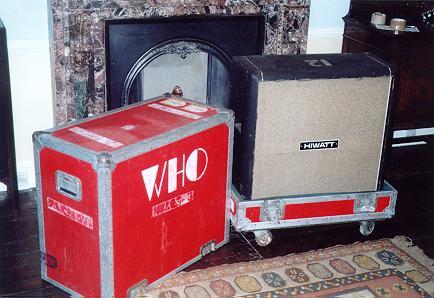


Click images to view larger versions Two examples of Hiwatt SE4123 4×12 cabinet and road case used by Pete. Note stencil markings evident on cab top in left photo. Courtesy Rock Stars Guitars.
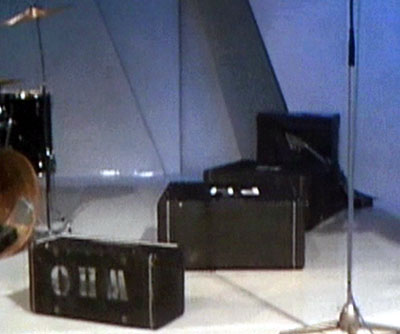
Ca. January 1973, examples of stencil markings applied directly to amp and cabinet tolex. Amplifier heads were often numbered in the early ’70s as well. Guitar is a Gibson Les Paul Custom “Black Beauty.”
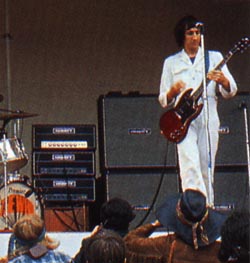
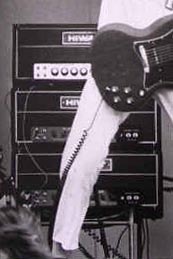
30 August 1969, second Isle of Wight show. Above and right, top amp (chrome faceplate) is customised Sound City with Hiwatt nameplate; Bottom two amps (black faceplate) are customised Hiwatt Custom DR103 amplifiers, customised to the CP103 specification, though no “The Who” faceplate.
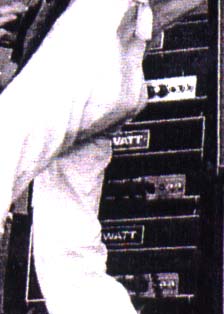
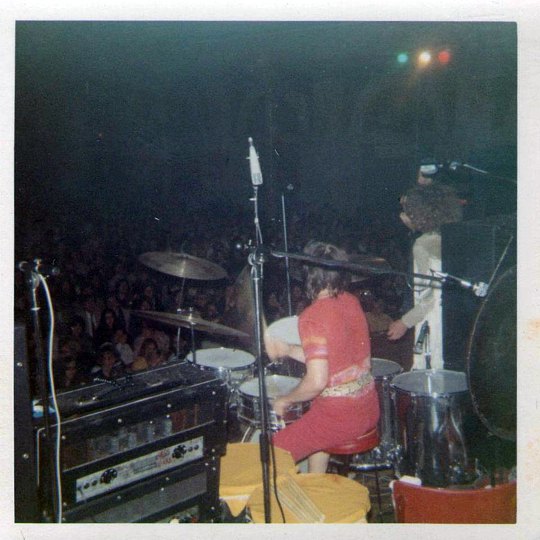
29 Sept. 1969, Amsterdam, Concertgebouw, rear view of amplifier setup.
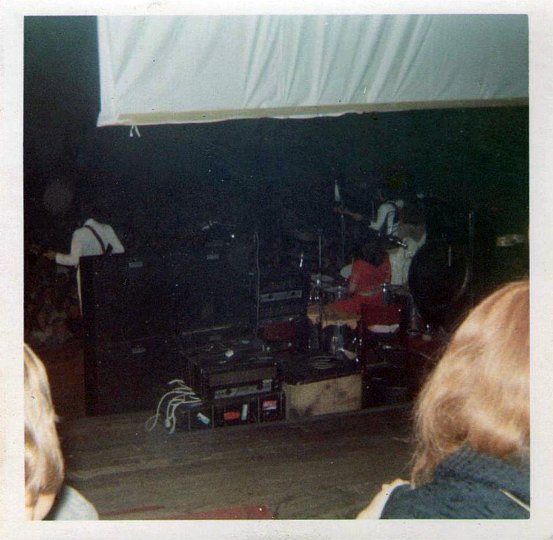
29 Sept. 1969, Amsterdam, Concertgebouw, rear view of amplifier setup, with spares in wait.
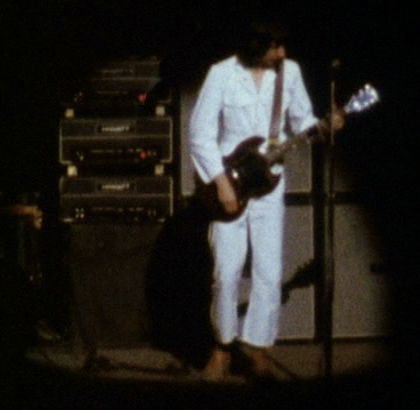
14 Dec. 1969, stage setup of Pete’s rig, one customised Hiwatt DR103 (top) and two CP103 amps with offset panel text, with four Hiwatt 4×12 cabs.
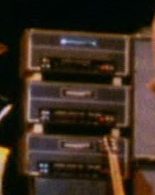
14 Dec. 1969, stage setup of Pete’s rig, one customised Hiwatt DR103 (top) and two CP103 amps with offset panel text, with four Hiwatt 4×12 cabs.
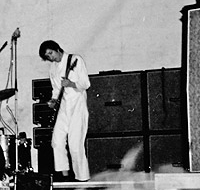
14 Feb. 1970, Leeds University, stage setup of Pete’s rig, one customised Hiwatt DR103 and two CP103 amps with four Hiwatt 4×12 cabs. Guitar is SG Special.
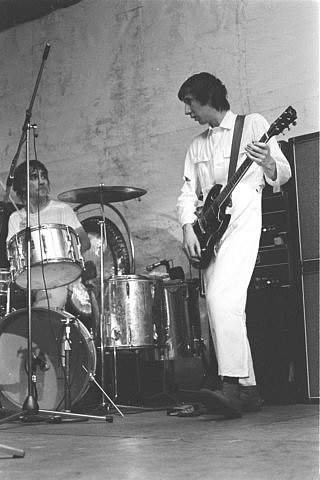
14 Feb. 1970, Leeds University, stage setup of Pete’s rig, one customised Hiwatt DR103 and two CP103 amps with four Hiwatt 4×12 cabs. Guitar is SG Special, and pedal is Univox Super-Fuzz.
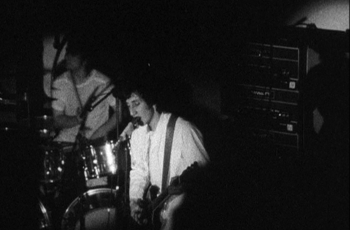
14 Feb. 1970, Leeds University, stage setup of Pete’s rig, one customised Hiwatt DR103 and two CP103 amps with four Hiwatt 4×12 cabs. Guitar is SG Special.
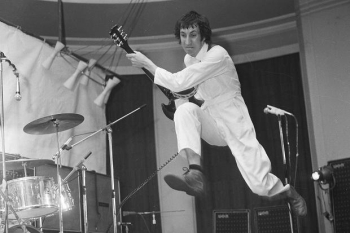
Click to view larger version. 14 Feb. 1970, Leeds University, stage setup of Pete’s rig, one customised Hiwatt DR103 and two CP103 amps with four Hiwatt 4×12 cabs. Guitar is SG Special.
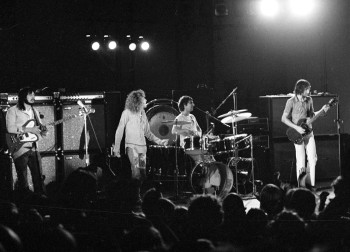
Click to view larger version. 16 Aug. 1971, Southern Illinois University, Edwardsville, Ill., with two Hiwatt CP103 amps and four 4×12 cabs. Guitar is Gibson SG Special. Courtesy Bob Elliott.
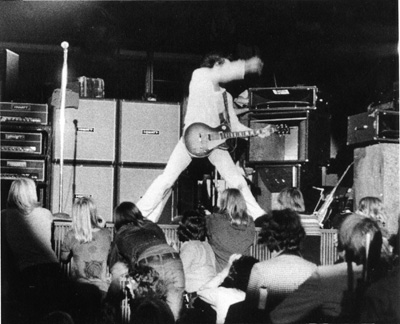
21 Aug. 1972, KB-Hallen, Denmark, typical stage setup of Pete’s rig. Guitar is Les Paul Deluxe.
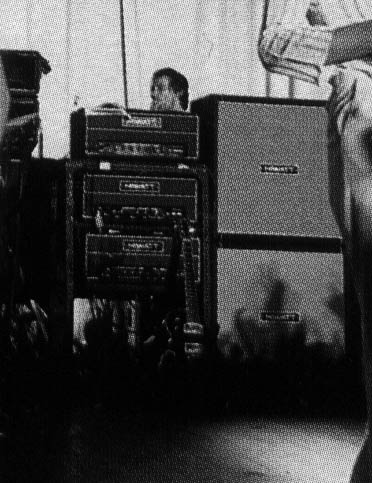
28 October 1973, Gretsch Duo Jet leaning against amp rack, which has two Hiwatt DR103W amps (top) and one Hiwatt CP103 amp (bottom).
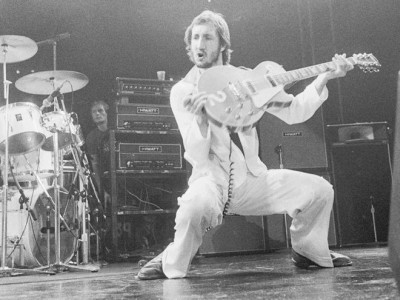
Ca. 1975, Pete’s rig, with two CP103 amps in rack unit, four Hiwatt SE4123 4×12 cabinets, topped by Acoustic 270 preamp unit.
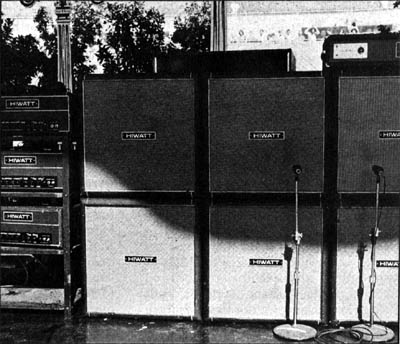
Ca. October 1976, Pete’s rig, with three CP103 amps in rack unit, six Hiwatt SE4123 4×12 cabinets, with one stack loaded with JBL K120 12″ speakers. Sunn Coliseum Slave power amp is for monitoring Entwistle’s bass signal.
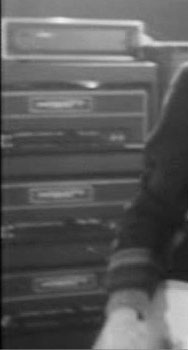
Ca. 1981, three CP103 amps in custom rack, topped with Roland rackmount Dimension D SDD-320 Chorus.
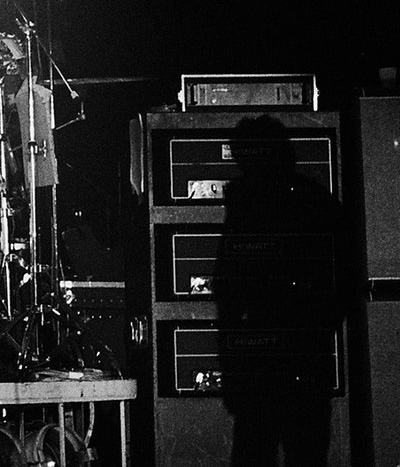
Ca. 1981, three Hiwatt CP103 amps in custom rack, topped with Roland Dimension D SDD-320.
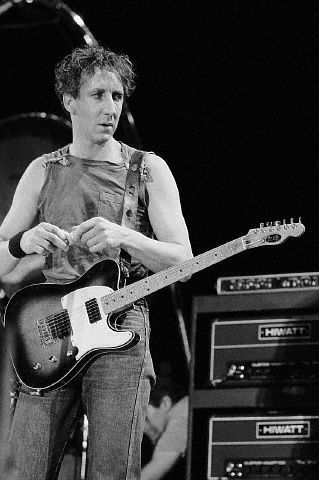
Ca. 1982, with two CP103 amps topped by Roland SDE-2000 DDL digital delay. Guitar is double-bound sunburst Giffin Telecaster. Courtesy Mark Herman.
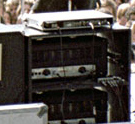
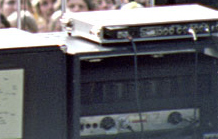
Ca. 1982, rear view of Hiwatt rig, with rear junction box visibile, with rack topped by Roland SDE-2000 DDL digital delay.
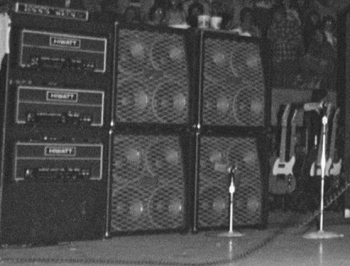
Ca. 1982: Pete’s Hiwatt rig with four MESA/Boogie 4×12 cabinets. Amplifiers are three Hiwatt CP103s, topped with Roland SDE-2000 DDL digital delay rack unit.
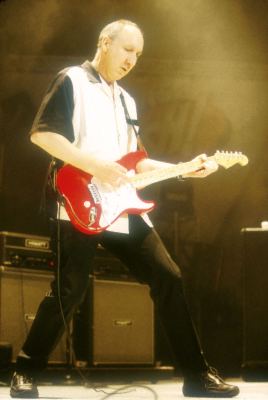
Ca. 1999, with two Hiwatt DR103W half stacks in background. Guitar is Fender Eric Clapton Stratocaster.
Resources and Information
Acknowledgements
Thanks to the following for assistance with this page:
- David Brewis at Rock Stars Guitars, rockstarsguitars.com.
- Brad Rodgers at whocollection.com.
- The Hiwatt Story (dcsbulldog.tripod.com).
- Justin Harris (thehiwattsband.com (archived))
- Mark Huss (hiwatt.org)
For more information:
- The Hiwatt Story, dcsbulldog.tripod.com
- Mark Huss’ Hiwatt Legacy: hiwatt.org
- PlexiPalace Vintage Amps Forum: vintageamps.com/plexiboard/viewforum.php?f=3 (archived)
Manufacturer’s Links:
- Hiwatt U.K. (owned by Music Ground): hiwatt.co.uk.
- Hiwatt USA (owned by Fernandes Guitars): hiwatt.com.
- Reeves Amplification: reevesamps.com
